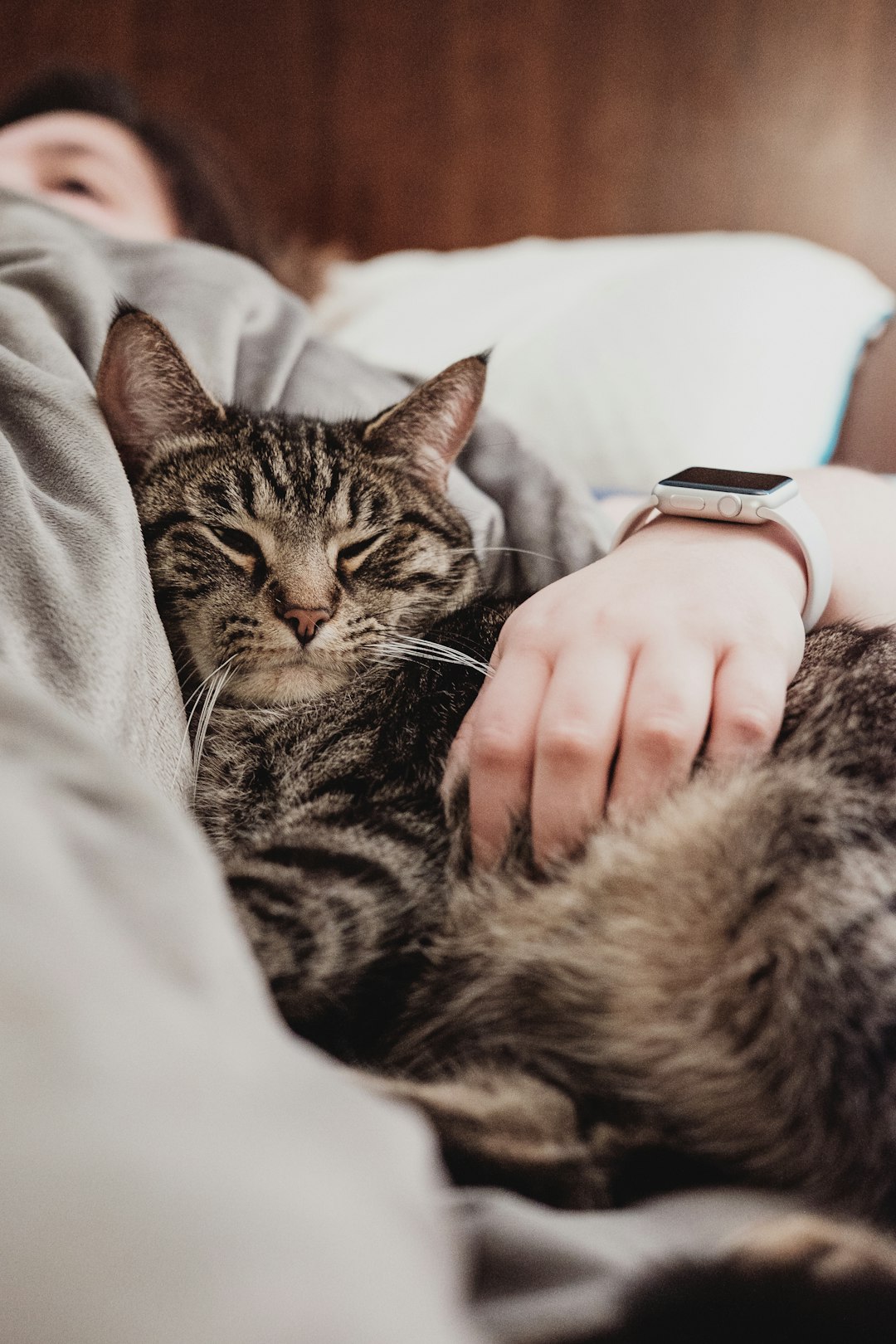If you discover your cat stung by a bee, it can be a distressing situation for both you and your feline friend. Recognizing the signs of a bee sting is crucial to ensure your cat receives proper care. From immediate steps to take after the sting to understanding when veterinary assistance is necessary, knowing how to respond can make a significant difference. In this guide, we will explore essential care tips to help you manage the situation effectively and keep your cat comfortable during recovery.
Recognizing the Signs of a Bee Sting in Cats
If you suspect your cat stung by a bee, knowing the signs can help you respond quickly. Observe your feline for the following symptoms:
- Limping or Licking: Your cat may exhibit discomfort by limping or repeatedly licking the affected area.
- Swelling: Look for localized swelling, especially around the face or paws, where the sting occurred.
- Redness: Inflammation may cause redness at the sting site.
- Vocal Changes: Listen for unusual vocalizations, like whining or yowling, indicating pain.
- Changes in Behavior: Your cat might become more withdrawn, aggressive, or seek hiding places.
- Excessive Grooming: Watch for over-grooming as they attempt to soothe the sting.
Being vigilant and recognizing these signs early can make a difference. If you confirm your cat stung by a bee, act promptly to alleviate their discomfort and assess the situation further. Use these indicators to provide better care and ensure your furry friend quickly returns to their playful self.

Immediate Steps to Take After a Sting
If you find that your cat has been stung by a bee, acting quickly is crucial. Here’s what to do:
Check for Symptoms: Look for swelling, redness, and signs of pain. Common indications include:
- Excessive licking at the sting site
- Whining or vocalizing
- Swelling around the mouth, face, or paws
Remove the Stinger: If you spot a stinger, carefully remove it with a pair of tweezers. Be gentle to avoid squeezing more venom into your cat.
Apply Ice: Use a cold pack wrapped in a cloth and apply it to the affected area. This can reduce swelling and provide relief.
Keep Your Cat Calm: Anxiety can aggravate the situation. Use soothing tones and a gentle touch to help your feline relax.
Monitor Your Cat: After a bee sting, watch for any changes in behavior for a few hours. Symptoms like difficulty breathing or excessive swelling may indicate a severe reaction.
By swiftly addressing the situation, you can effectively manage your cat stung by bee and reduce potential complications.
Assessing the Severity of the Sting
When a cat stung by a bee, knowing how to assess the sting’s severity is crucial for effective care. Here’s how you can evaluate your feline friend’s condition:
Observe Symptoms:
- Mild Symptoms: Swelling, redness, or slight itching at the sting site.
- Moderate Symptoms: Excessive swelling, localized pain, or visible distress.
- Severe Symptoms: Difficulty breathing, excessive drooling, vomiting, or lethargy.
Check for Allergic Reactions:
- If your cat experiences any of the following, it may indicate an allergy:
- Swelling of the face or muzzle
- Hives or rash on the skin
- Rapid heartbeat
- If your cat experiences any of the following, it may indicate an allergy:
Duration of Symptoms:
- Minor symptoms typically resolve within a few hours.
- Persistent or worsening symptoms demand immediate attention.
Severity Comparison Table
| Severity Level | Symptoms | Action Required |
|---|---|---|
| Mild | Redness, minor swelling | Monitor; apply a cold compress |
| Moderate | Increased swelling, pain | Consult vet if symptoms worsen |
| Severe | Difficulty breathing, lethargy | Seek emergency veterinary care |
If your cat stung by a bee shows signs of severe or allergic reactions, act swiftly to ensure their safety and health.
Home Remedies for Minor Stings
If your cat stung by a bee has a mild reaction, you can employ several home remedies to soothe their discomfort. These remedies help reduce swelling and alleviate pain. Here’s what you can do:
- Cold Compress: Apply a clean cloth soaked in cold water or an ice pack wrapped in a towel to the affected area for 10-15 minutes. This reduces swelling and numbs the pain.
- Baking Soda Paste: Mix baking soda with water to create a paste. Apply it gently to the sting site. Baking soda helps neutralize the venom and calms the irritation.
- Aloe Vera: Known for its soothing properties, you can apply pure aloe vera gel to the sting area. It provides relief from itching and promotes healing.
- Honey: Applying a small amount of honey can help due to its natural anti-inflammatory properties. Just ensure your cat does not lick too much of it.
Caution: Always monitor your cat after treatment. If symptoms worsen or signs of an allergic reaction appear, such as difficulty breathing or swelling of the face, seek immediate veterinary care. Recognizing a cat stung by a bee early can significantly enhance recovery outcomes.

When to Seek Veterinary Assistance
If your cat stung by a bee shows any of the following signs, it’s crucial to seek veterinary assistance promptly:
- Severe swelling: If the area around the sting is significantly swollen, this could indicate a more serious reaction.
- Difficulty breathing: Labored breathing or wheezing signals an urgent need for veterinary help.
- Vomiting or diarrhea: These symptoms may suggest an allergic reaction or systemic issues from the sting.
- Behavioral changes: If your cat becomes unusually lethargic, disoriented, or unresponsive, don’t delay in getting help.
- Multiple stings: A cat struck by numerous bees may experience intensified reactions that warrant immediate medical care.
Comparison of Symptoms
| Signs | Minor Reaction | Serious Reaction |
|---|---|---|
| Swelling | Mild local swelling | Severe swelling |
| Breathing | Normal | Difficulty breathing |
| Vomiting | Rarely | Possible |
| Lethargy | Slightly less active | Extreme lethargy |
In summary, if your cat stung by a bee displays any serious symptoms, quick veterinary care can be life-saving.
Understanding Allergic Reactions in Cats
When a cat stung by a bee, it is important to monitor for signs of an allergic reaction. Some cats may react differently, based on their individual sensitivities. Here are key signs to watch for:
- Swelling: Look for swelling around the face, paws, or where the sting occurred.
- Hives: Raised bumps can appear on the skin, indicating an allergic response.
- Difficulty Breathing: Be alert for any labored or rapid breathing, which can signal a severe allergy.
- Vomiting or Diarrhea: Gastrointestinal upset may occur as a reaction to the sting.
Severity Comparison
| Symptom | Normal Reaction | Allergic Reaction |
|---|---|---|
| Swelling | Minimal, localized | Significant swelling |
| Breathing | Normal | Labored or noisy breathing |
| Skin Reaction | Minor redness | Hives and extensive rash |
| Gut Reaction | Rare | Vomiting or diarrhea present |
If you suspect your cat stung by a bee is having an allergic reaction, contact your veterinarian immediately. Early intervention can prevent serious complications and ensure your cat receives the appropriate care.
Preventative Measures to Avoid Future Stings
Taking proactive steps can help prevent a situation where your cat stung by a bee occurs. Here are some effective measures to consider:
Supervise Outdoor Time: Always supervise your cat while they explore outdoors, especially in areas with flowers or gardens where bees are likely to be present.
Limit Access to Flower Beds: Restrict your cat’s access to floral gardens. Bees usually flock to these areas, increasing the risk of stings.
Maintain a Bee-Free Environment: Regularly check for and remove any beehives or swarming bees around your home. If you find a hive, contact a professional for safe removal.
Training and Diversion: Train your cat to remain away from areas where bees gather. Use distractions such as toys or treat trails to steer them away.
Monitor Pollen Levels: During peak buzz seasons, consider keeping your cat indoors during high pollen times to reduce their chances of encountering bees.
By implementing these strategies, you can significantly decrease the likelihood of your cat getting stung by a bee and ensure a safer environment for your furry friend.

Tips for Keeping Your Cat Calm During Treatment
When your cat stung by a bee, keeping them calm during treatment is crucial for their recovery. A stressed cat may resist care, making it harder to assess and treat the sting. Here are some effective strategies:
Create a Safe Space: Assemble a cozy area with familiar blankets and toys. This will help your cat feel secure, reducing anxiety.
Speak Softly: Use a calm, soothing voice while approaching and handling your cat. This reassurance helps lower stress levels.
Use Treats: Gradually reward your cat with their favorite treats. This positive reinforcement encourages cooperation.
Limit Movement: Keep your cat in a small, enclosed space to prevent them from darting around. You can use a small carrier or a bathroom.
Stay Patient: Give your cat time to adjust. If they seem agitated, pause and gently try again later.
Consult a Vet: If your cat remains overly anxious or aggressive, seek professional advice. Vets may suggest calming medications.
By following these tips, you can help ensure a smoother treatment process for your cat stung by a bee.
Frequently Asked Questions
What are the immediate steps I should take if my cat is stung by a bee?
If your cat is stung by a bee, the first step is to assess the situation calmly. Check the area around the sting for the stinger; if it is still embedded in your cat’s skin, carefully remove it using a pair of tweezers. Gently clean the area with soap and water to avoid infection. Applying a cool compress can help reduce swelling and pain. Monitor your cat for any signs of serious allergic reactions, such as difficulty breathing or swelling of the face, which require immediate veterinary attention.
How can I tell if my cat is having an allergic reaction to a bee sting?
Signs of an allergic reaction to a bee sting in cats can vary, but they commonly include swelling at the sting site, excessive scratching or licking of the affected area, vomiting, diarrhea, and more severe symptoms like facial swelling, hives, or difficulty breathing. If you notice any of these symptoms, you should seek veterinary assistance immediately, as allergic reactions can progress rapidly and might require intervention or treatments such as antihistamines or corticosteroids.
Are bee stings dangerous for cats, and should I always take my cat to the vet?
Bee stings can be dangerous for cats, particularly if the cat has a known allergy to bee venom. While many cats can experience a bee sting with minor symptoms that resolve on their own, complications can arise, such as severe allergic reactions or infections. If your cat gets stung and shows only mild symptoms, you may monitor them at home, but it’s always best to consult with your veterinarian for guidance tailored to your cat’s individual health history, especially if your cat has been stung multiple times.
What home remedies can I use to soothe my cat’s bee sting?
To soothe your cat’s bee sting at home, ensure that you’ve removed the stinger if present, then you can apply a cool compress to the affected area to help reduce swelling and provide relief from pain. Additionally, a small amount of honey can be applied as it has natural soothing properties, but ensure your cat won’t lick it off in excess. However, avoid using creams or ointments not specifically formulated for pets, and always consult your veterinarian before administering any home remedies to ensure they are safe for your cat.



